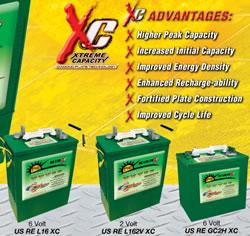The concept of radiant heating is to warm walls, objects, and people which in return warm the air creating ultimate comfort at lower room temperature.
Radiant Comfort And Energy-Efficiency
Electro Plastics, Inc. | Electro Plastics, Inc.

Contributed by Electro Plastics, Inc.
Discerning home buyers appreciate the many technological advantages and energy-efficient features offered with new home construction. Changes in building construction take into consideration the Green Building Concept and respect for the environment and Indoor Air Quality (IAQ) concerns for a healthy home. Energy-efficiency and comfort are given priority. Radiant heat is an integrated part of this concept.
A convection system, like forced-air, relies on blowing warm air into the house. Since air does not maintain heat, the room temperature fluctuates as the system goes on and off.
The concept of radiant heating is to warm walls, objects, and people which in return warm the air creating ultimate comfort at lower room temperature. A large area of mild surface temperature, such as a warm floor, is capable of transferring as much heat as a small surface area, such as a radiator, at high surface temperatures. The even distribution of heat eliminates drafts and gives a pleasant comfort at a lower temperature, making the system more cost-effective. Beyond comfort, radiant heat does not circulate dust and allergens that can cause respiratory problems. Due to increased temperature at the floor level, there is less moisture, thereby inhibiting dust mites and mold/mildew problems.
 Commonly used radiant floor heating systems are: hot water radiant floors (hydronic
systems) and electric radiant floors (heating cables, mats, flexible heating
films and self-regulating heating elements).
Commonly used radiant floor heating systems are: hot water radiant floors (hydronic
systems) and electric radiant floors (heating cables, mats, flexible heating
films and self-regulating heating elements).
Hydronic systems pump heated water from a boiler through tubing laid in a pattern underneath the floor. The water supplied to the system generally ranges from 85oF (29oC) to 1400F (60oC) and is controlled by thermostats to moderate the floor temperature. A cementitious material or an air gap is required to evenly distribute the heat.
Electric cables, mats and flexible heating films convert electrical power into heat and require a thermal mass or an air gap to spread out the heat. Since the power generated is fixed, temperatures are controlled by on/off thermostats and floor sensors.
 Self-regulating elements are made of a semi-conductive material and cannot
overheat, as the element warms up, the energy draw gradually decreases. For this
reason the self-regulating elements can be placed directly under the floor
covering.
Self-regulating elements are made of a semi-conductive material and cannot
overheat, as the element warms up, the energy draw gradually decreases. For this
reason the self-regulating elements can be placed directly under the floor
covering.
Electric systems can be line voltage or low-voltage. Some systems can be powered AC or DC and can also be run by solar or wind generated electrical power source.
Radiant systems are available from floor warming to partial or complete heating. Depending on the application, e.g., new construction, addition, remodeling, or type of floor covering, one system may be better suited than another. Some systems are easier to install and to zone, some are limited to the type of floor covering used, others have lower building height and react faster to temperature changes.
Get to know the benefits and feel the comfort of radiant heat.
 Designed
to be used under any kind of flooring as radiant heat. It can be used as
primary or secondary heat. For areas smaller than 200 sq.ft. systems in
kit sizes are available. The system can be installed after the
floor was installed, if the sub floor is accessible from below.
Designed
to be used under any kind of flooring as radiant heat. It can be used as
primary or secondary heat. For areas smaller than 200 sq.ft. systems in
kit sizes are available. The system can be installed after the
floor was installed, if the sub floor is accessible from below.
The content & opinions in this article are the author’s and do not necessarily represent the views of AltEnergyMag
Comments (0)
This post does not have any comments. Be the first to leave a comment below.
Featured Product

